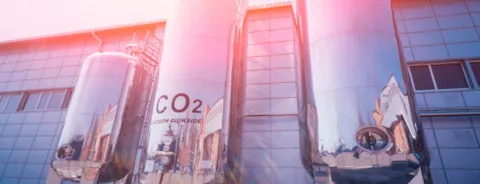Carbon Capture and Storage (CCS) – Part 2 – Lets make it happen
The second part of this post focus on transporting and storing CO2.
The captured CO2 will rarely be stored at the site of capture and will require transportation to a more suitable storage location. A large, interconnected infrastructure will be needed to cope with large volumes of the gas and to further promote commercialization and implementation of CCS. As we all know, the technology required to transport the gas has been in operation for decades and depending on the transporting distance and location, either a pipeline, ship or tanker trucks can be used.
Transportation of CO2 via a pipeline has a further advantage over other means, i.e. there is no need for interim storage. Millions of tons of CO2 is already transported via pipelines, primarily to enhanced oil recovery (EOR) fields – another extremely important area of interest for those working with reliability, availability and maintainability analysis.
Use of CO2 in EOR projects adds value to the captured gas; many oil producers in the USA are prepared to pay between US$9 – 18 per ton of CO2 delivered. This places more confidence in implementation of CCS; a somewhat substantial infrastructure network already exist which could be upgraded to assist the transportation of CO2 at increased volumes related to CCS.
Safety is another parameter that needs to be addressed. Carbon dioxide is a toxic gas which is odourless and colourless. Rising levels of carbon dioxide affect the human body, but what level is dangerous and how do you know you are suffering from carbon Dioxide poisoning? If the concentration of the carbon dioxide in the ambient air is increased, the pulmonary gas exchange is compromised. In simple terms, as its concentration in the ambient air increases, lower quantities of carbon dioxide leave the blood stream and/or alveoli and therefore there is less room for oxygen. And without oxygen one cannot live.
This effect is called intoxication. Carbon dioxide intoxication is entirely independent of the effects of oxygen deficiency (i.e. asphyxiation) therefore the oxygen content in the air is not an effective indication of the danger of intoxication.
Good news are that statistics from EOR industry are indicative of the lower risks posed by CO2 transportation in comparison to those by natural gas. To mitigate and minimise risks, transportation routes should be away from populated areas and a comprehensive quantitative risk analysis must be carried out.
Now, where RAM analysis comes into this?
There is a new concept of RAM analysis/performance prediction studies which incorporates not only the reliability and maintainability aspects of the system but also its operation policy. Within the area of operational procedures, one important step on guaranteeing product delivery refers to logistics operations. Logistics operations are basically transporting, operating export and import terminals and storing products.
RAM analysis will help to investigate the potential challenges related to the transportation of CO2 in a distribution network. Pipelines, reliability of export systems, maintenance strategy of these systems, planned inspections and intervention activities and so on. This will allow to, again, understand the feasibility of the new technology and address areas of major concern prior actually building the asset.
Author: Victor Borges
4/14/2014 4:40:50 PM
